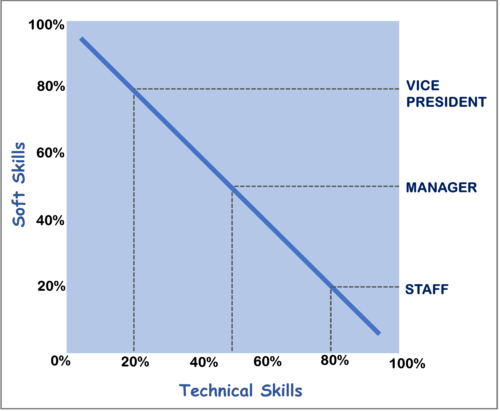“So the guy who can’t code, can’t write and never watched soap operas was able to build a soap opera blog that later sold for $8.75 million”
One of the podcasts I listen to religiously is My First Million, where the hosts discuss business topics and invite guests to discuss how they made their first million dollars. About four months ago, I listened to an episode where the guest discussed how he made his first million and I found it really fascinating and wanted to share with you because I was amazed on how easy it was for him to build his business with limited skills and resources. Sometimes, we assume that making a million dollars is a difficult process that requires a significant amount of capital and expertise, however some individuals are able to accomplish this feat with limited investment and proficiency.
Summary
The name of the guest was Ramon Van Meer, some years back he decided to start a blog, however, he did not know what to blog about. He decided to take the approach of looking at what was already popular and started blogging about it. He purchased a $49 website template from Theme Forest because he did not know how to code. He outsourced the writing of the blog to freelancers because he did not know how to write and some how he took those simple steps and built the most popular blog about a subject he knew nothing about, Soap Operas; think Young and the Restless, Days of our Lives, General Hospital etc. To make matters worse, Ramon never watched soap operas because he thought they were boring. So the guy who can’t code, can’t write and never watched soap operas was able to build a soap opera blog that later sold for $8.75 million. The takeaway from this story is that you do not have to be a genius or have a super complicated high-tech business to work. Sometimes finding a niche product that has a lot of passion behind it can lead to a simple profitable business.
Deep Dive
Ramon was born in the Netherlands, he dropped out of high school at the age of 15 and became an entrepreneur working construction, promoting parties and selling products online, basically doing whatever he could for the next 20 years to make ends meet. In 2015, Facebook was good for business advertising because when you created a business page and had followers, almost 100% of your followers saw your post in their news feed. Ramon was good at using his Facebook pages to drive traffic to websites. This was his practice:
- Create a Facebook page
- Promote the page to get likes and followers
- Create Facebook posts with links to his website
- Encourage followers to click on his post links driving followers to his site
In 2015, Ramon wanted to create a blog website but he didn’t really know what to blog about. All he wanted was content that will bring traffic and engagement to his blog, so he decided to use the aforementioned 4-step traffic generation process and created 11 experimental Facebook pages. Some of the pages he created included pages about pets, marijuana, soap operas and politics.
After creating the Facebook pages, he would pay to boost the page to get more likes and followers, he will then post a topic to see how many likes and comments it generated. He noticed that of all the Facebook pages he created, two pages generated a lot of engagement, these were his politics and soap opera pages. He found out that the more niche a page was, the more engagement you get from followers. After assessing the politics and soap opera pages, he decided to discard the politics page after two weeks because he noticed that his posts usually led to extended arguments on the comments and he was not a big fan of that type of engagement.
Ramon concentrated on the soap opera page, he posted soap content and noticed a lot of sharing, likes and commenting on his posts. He then decided to buy a WordPress template website from Theme Forest, made a few tweaks to the template, added a logo, built the blog site and named it soaphub.com. Ramon mentioned that he is far from a perfectionist, he believes in speed in execution, he prefers to go live and then tweak his product based on user feedback. Once the site was built, he had one problem, he knew nothing about soap operas, as a result, he went to upwork.com and put in a request for a freelancer to write soap operas. Luckily, he found a freelancer who used to write for soap opera magazines.
His plan was to have the freelancer write daily short articles 200-400 words at $10-$15 per article. They wrote articles on spoiler alerts, recapping old episodes for those who missed it. After some time he looked for what he could do to gain more traffic on his website. He then reviewed other blogs and noticed that they would use quizzes to have people sign up using their emails, and then they created newsletters to spread more content. So he created quizzes like “Which Days of Our Lives character are you?” readers would click on the quiz, provide their email addresses, which led to a soap opera newsletter with over 350,000 readers.
The traffic on his website kept growing, he then hired more writers, they made connections with soap opera publicists and started getting exclusive interviews with cast members; after a year, he was generating about $500,000 per month in revenue. A significant portion of his revenue were from Google AdSense. After three years, he wondered if anyone would be willing to buy his website and how much would they pay? He hired a broker, Quiet Light Brokerage to see how much his website was worth. The way the brokers work is to review the last 12 months of profit and use a multiplier between 2x-5x depending on the industry. After going through the calculation, it was deemed that his website was worth $5 million.
They found a buyer who was willing to pay $5 million for the site and then they went through the due diligence process where the buyer’s lawyers did a deep dive on the company to ascertain that his books were clean and accurate. The due diligence process was an extended period and in the process, his revenue from the site kept growing, as a result, he felt that the company was now worth more than $5 million due to the increased revenue figures. He met with the broker and they decided to increase the price and finally, the business sold for $8.75 million.
Takeaway
I ran into a YouTube video, Odd Money TV that did a good job summarizing Ramon’s actions. In order to replicate Ramon’s approach, one needs to do the following:
- Start small – Ramon did not have a big business in mind, all he wanted was something tangible to bring traffic to a website
- Find out what works – He started many Facebook pages and narrowed it down to one page that had a lot of engagement, a similar exercise can be performed with LinkedIn and TikTok since Facebook and Instagram algorithm changed
- Act Quickly – He didn’t spend too much money, he created a Minimal Value Product (MVP) to see how users reacted to the product and then slowly refined his product based on feedback
- Outsource Competency – He quickly outsourced the writing because he knew he was not good at writing
- Copy what works – You do not have to re-event the wheel, he noticed that quizzes and newsletters work in other blog sites so he mirrored that approach
- Re-invest – The early money he made was invested in Facebook ad spending, which led to even more traffic and revenue for his site
Hopefully you were able to pick up a few tips on how to create a profitable site with minimal investment. Please subscribe to our blog to get our newsletter


